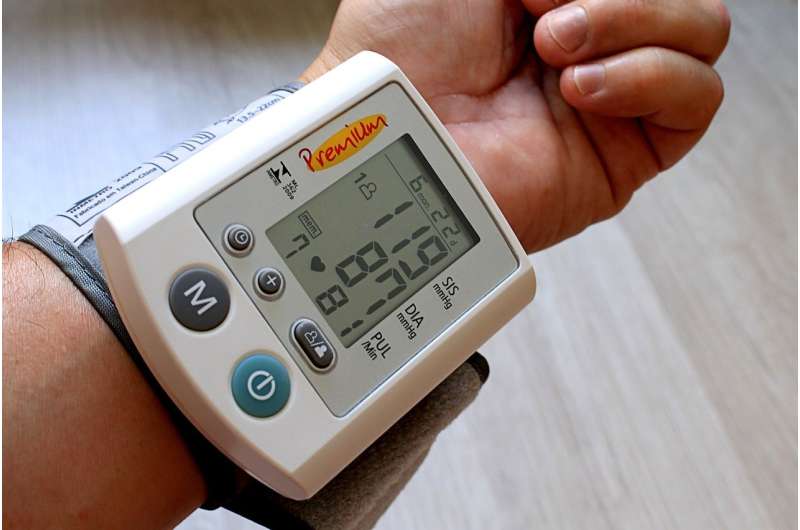No added dizzy episodes for adults on more intensive blood pressure-lowering treatment

Adults who received more intensive treatment to lower their blood pressure were less likely to experience drastic blood pressure drops, which can cause dizziness and increase risk of falling, according to preliminary research presented at the American Heart Association's Hypertension 2019 Scientific Sessions.
The study of more than 2,800 adults, average age 63 with a recent stroke, found that a lower systolic blood pressure goal was associated with a lower risk of sudden drops in blood pressure when changing position from sitting to standing—a condition known as orthostatic hypotension (OH). Systolic blood pressure is the top number in a blood pressure reading and a marker of the force of blood flow against the arteries when the heart contracts.
Optimal blood pressure helps reduce the risk for heart attacks and strokes, however, aggressive blood pressure treatment in older adults has long been thought to contribute to falls. Falling is a well-known risk factor for fractures, prolonged hospitalization and even death in older individuals. One in four older adults experience a fall each year, according to the National Council on Aging.
"Falls can be devastating in this older population," said lead study author Stephen Juraschek, M.D., Ph.D., an assistant professor of medicine at Harvard Medical School and an internal medicine physician at Beth Israel Deaconess Medical Center in Boston, Mass. "As a result, there is substantial concern about anything that might increase their fall risk. However, our study provides strong evidence that intense blood pressure treatment does not induce orthostatic hypotension or its symptoms."
Previous studies have yielded inconclusive evidence, the researchers said. In this study, Juraschek and team set out to determine how lower systolic blood pressure affects symptoms of OH.
The researchers monitored response to blood pressure medication in two groups of patients. Half of the participants were treated more aggressively, aiming to reduce blood pressure to levels below 130/80 mmHg. The other half received less intensive therapy allowing them to maintain a slightly higher blood pressure of between 130-149/80-90 mmHg or more.
Researchers monitored blood pressure levels and symptoms during 36,342 visits, for an average of 15 visits per participant. During each visit, a participant's blood pressure was measured three times while seated and one time after two minutes of standing up to capture any changes and symptoms of OH.
Participants who received more intensive therapy and achieved lower systolic blood pressure (130 mm/Hg or under) had better overall blood pressure control and had fewer OH episodes.
More information: American Heart Association Meeting Report – Presentation #103; Session 16B


















